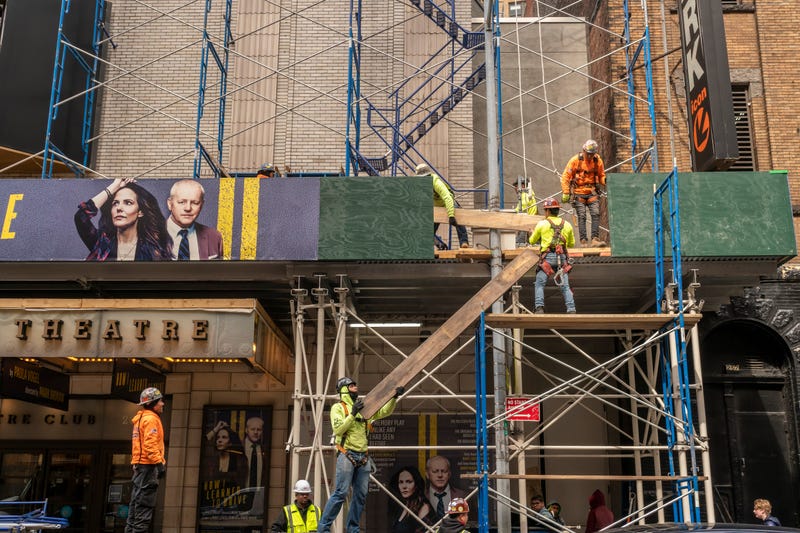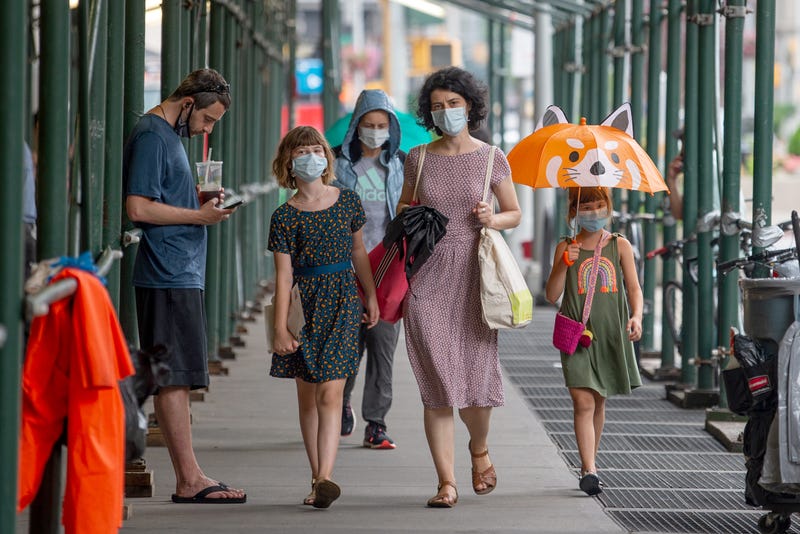
NEW YORK (1010 WINS/WCBS 880) -- New York City officials announced a plan Monday to reduce the number of "street sheds," sidewalk scaffolding that has been a blight on city streets for decades.
The street sheds—not to be confused with the outdoor dining sheds from the pandemic—are structures built over sidewalks at the behest of property owners. They're ubiquitous across the five boroughs, with some up for years with no end in sight.
Mayor Eric Adams and Buildings Department Commissioner Jimmy Oddo unveiled the effort Monday, dubbing it "Get Sheds Down," an apparent nod to Adams' "Get Stuff Done" vision for the city.
They described the plan as a "sweeping overhaul of rules governing sidewalk construction sheds and scaffolding that will remove these eyesores from city streets more quickly while redesigning and reimagining those that are needed."
While sidewalk sheds serve the purpose of protecting pedestrians at street level from falling objects, property owners are notorious for leaving the sheds up instead of completing critical but more expensive facade work on their buildings.

This has led to 3% of the city's sidewalk space—or nearly 400 miles—being covered by the scaffolding, according to officials.
There are currently 9,000 permitted construction sheds that have been up an average of 500 days, officials said. About 1,000 sheds have been up for three years or more.
The city will now work to remove the sidewalk sheds more quickly and replace them, when possible, with "more aesthetic and less intrusive alternatives," including safety netting.
The new plan will incentivize property owners to expedite their facade repairs and remove sheds with expired permits, the mayor's office said.
"We must show the visual beauty of this city, and it should not be in the skeleton body of these sheds all over our city," Adams said at a news conference Monday.

The mayor slammed "bureaucratic rules" that have led to the rise of long-standing sidewalk sheds, which officials blamed on everything from homeless encampments to drug dealing.
As part of the plan, the New York City Department of Citywide Administrative Services will pilot the use of safety netting for ongoing facade work at Queens County Supreme Court, where sheds have been up since April 2017—more than 2,500 days.
The plan will also expand financial penalties for property owners starting in the central business districts of four boroughs, including Midtown Manhattan; Long Island City, Queens; Downtown Brooklyn; and Grand Concourse in the Bronx.
The monthly financial penalties would target sheds that are located in the public right of way and not directly related to new construction or demolition projects. The penalties—capped at $6,000 per month—would start 90 days after the shed is first permitted and continue until the shed is removed.
Officials will put a loan program in place if building owners have a hard time affording building repairs.
The Buildings Department will also move to reduce the duration of a shed permit from 12 months to 90 days, requiring property owners to renew permits four times per year to keep their sheds properly permitted.
Additionally, the plan will include a review of Local Law 11, the 1998 law that required buildings over six stories to have their facades inspected every five years. The city will see if it can "employ less frequent and/or less onerous inspections without jeopardizing pedestrian safety."
More about the plan can be found at NYC.gov.



